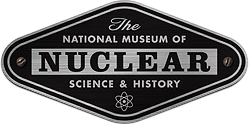Igor Kurchatov (1903-1960) was a Soviet nuclear physicist and the director of the Soviet atomic bomb project. He is often known as the “father of the Soviet bomb.”
Kurchatov studied at Crimea State University and the Polytechnical Institute in Petrograd (present day St. Petersburg), where in 1923 he earned his degrees in physics and naval engineering respectively. In 1925, he became a research assistant at the Physico-Technical Institute of the Soviet Academy of Sciences in Leningrad, where he studied radioactivity. Kurchatov received funding for his research in nuclear science in 1932 and assisted in building the Soviet Union’s—and Europe’s—first cyclotron, completed in 1937.
Suspicious of Anglo-American atomic cooperation and fearing a German bomb, especially after obtaining a copy of the MAUD Report in 1943 on the feasibility of atomic weapons, Stalin authorized the creation of a Soviet nuclear program. In April 1943, the Soviet Academy of Sciences appointed Kurchatov to direct the nascent Soviet program.
Following the bombings of Hiroshima and Nagasaki, Stalin ordered a crash program to accelerate the development of a Soviet bomb. He ordered Kurchatov to produce a bomb by 1948. Russian espionage and intelligence on America’s nuclear program during the war aided this effort. On August 29, 1949, the Soviets tested their first plutonium implosion bomb, codenamed “First Lightning.”
Kurchatov continued his work in atomic physics and contributed to the Soviet hydrogen bomb. However, after the “First Lightning” test, he grew increasingly aware of nuclear weapons’ destructive capacity and began to advocate for the peaceful development of nuclear technology.
Kurchatov died of a cardiac embolism at the age of fifty-seven in Moscow on February 7, 1960. His ashes were buried in the Kremlin Wall Necropolis in Red Square.





_0.gif)